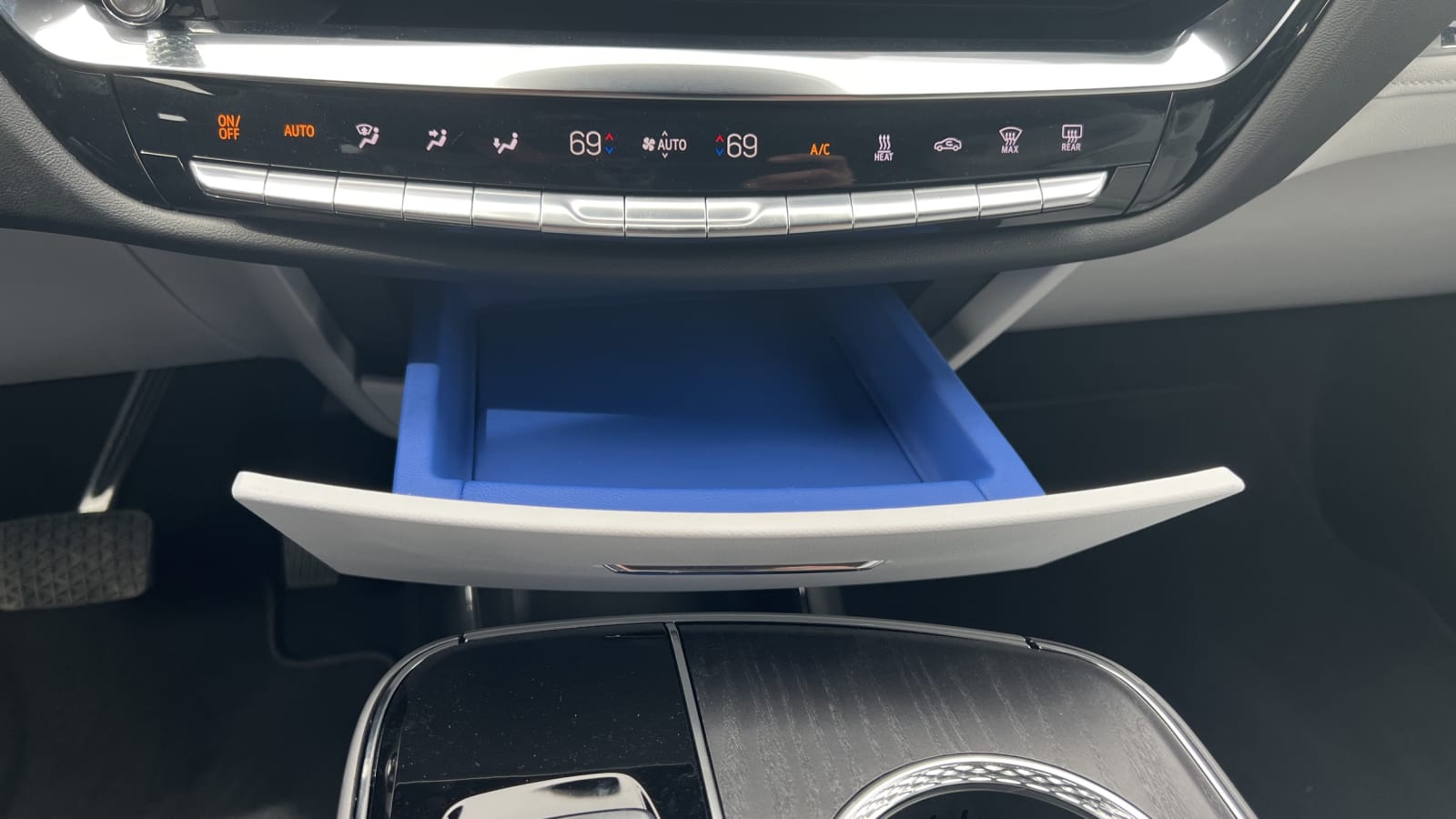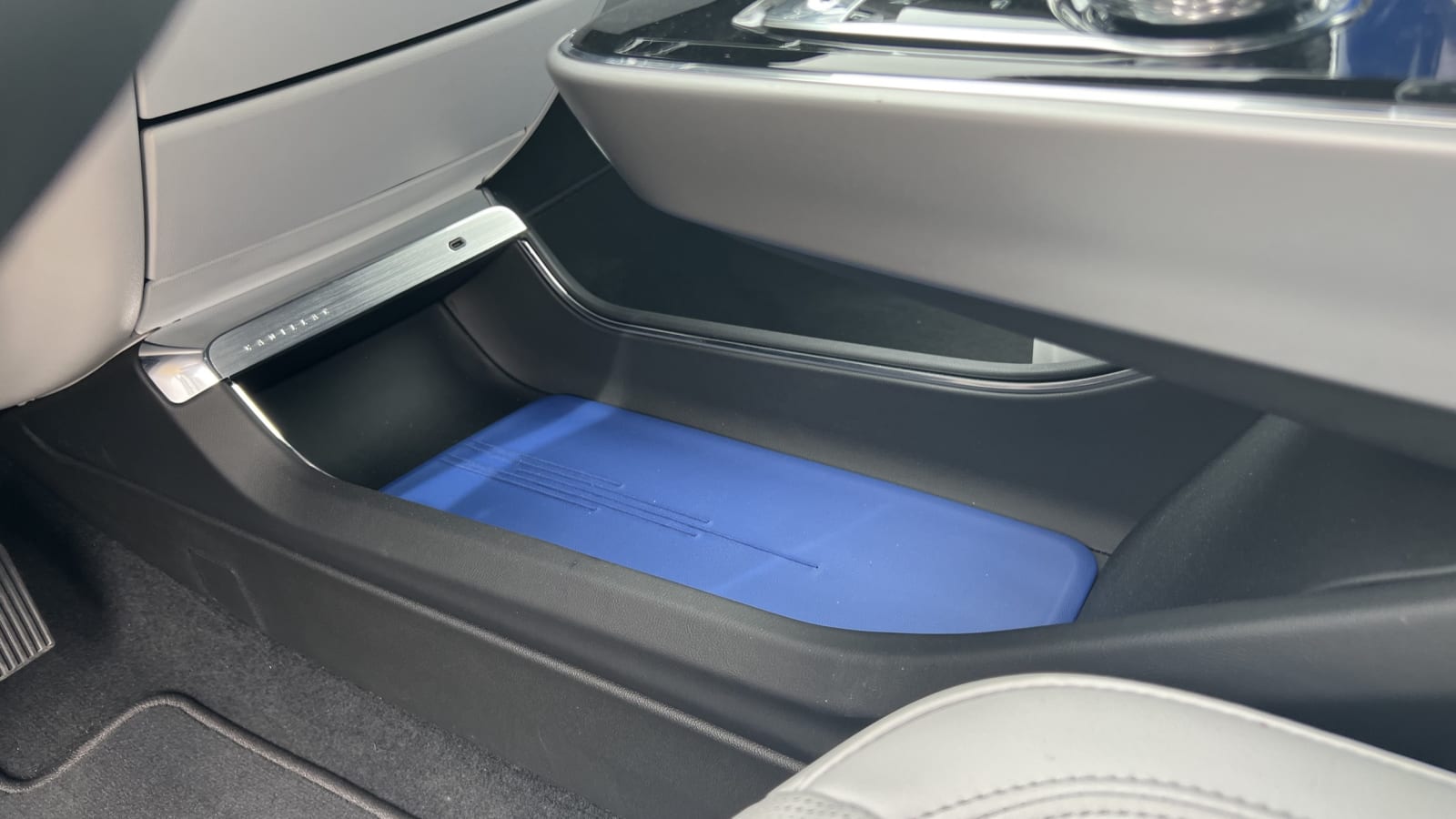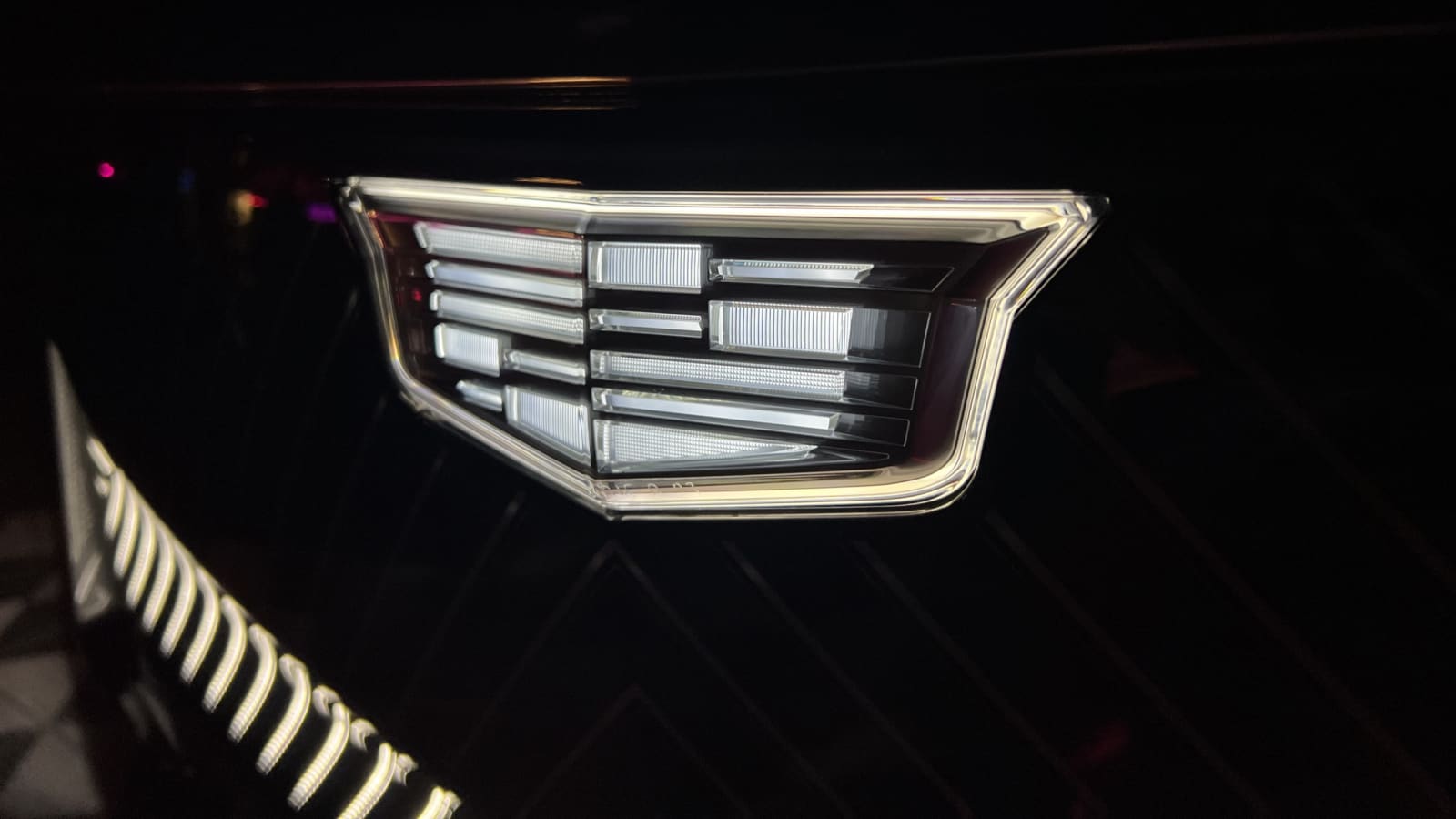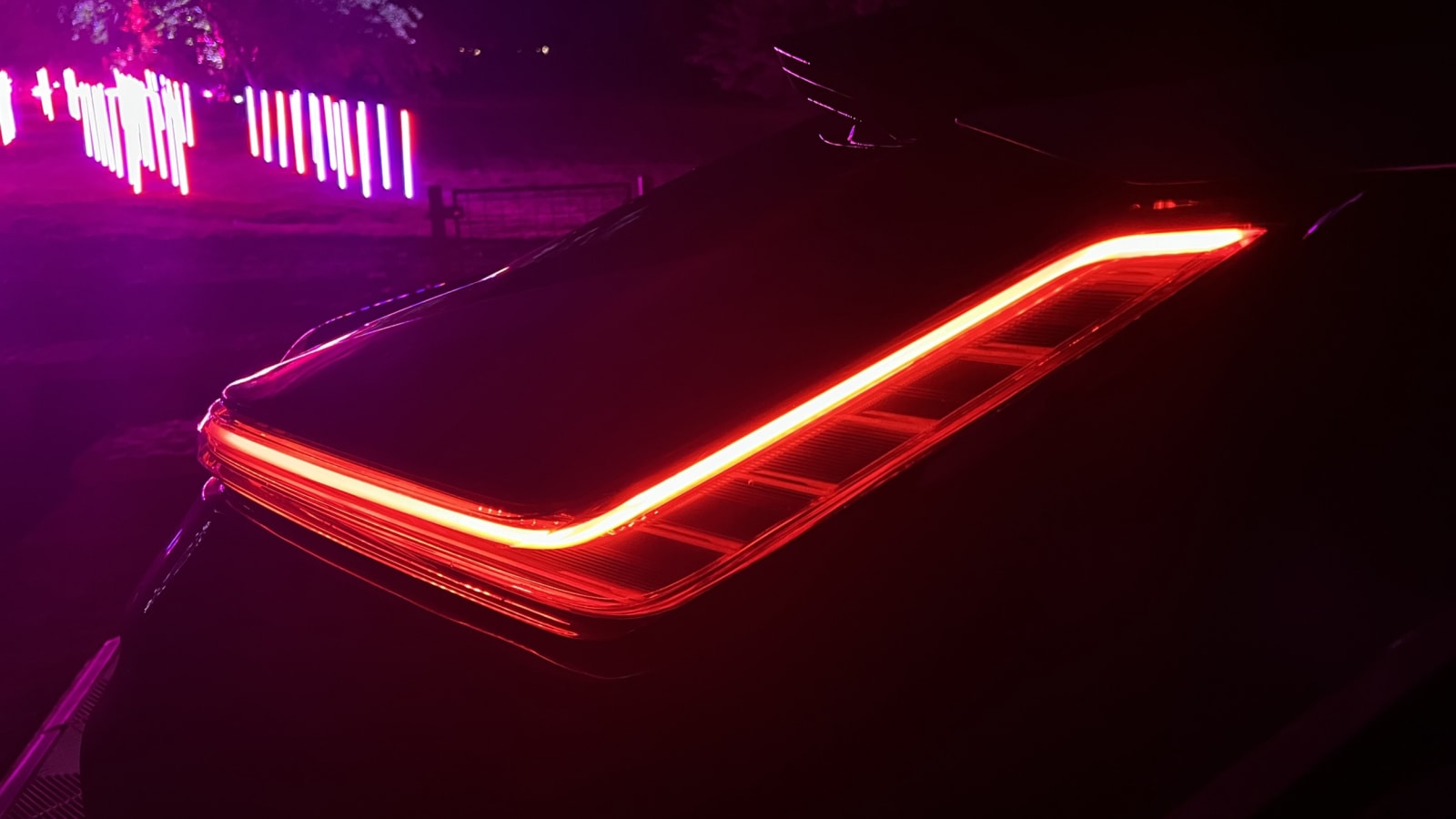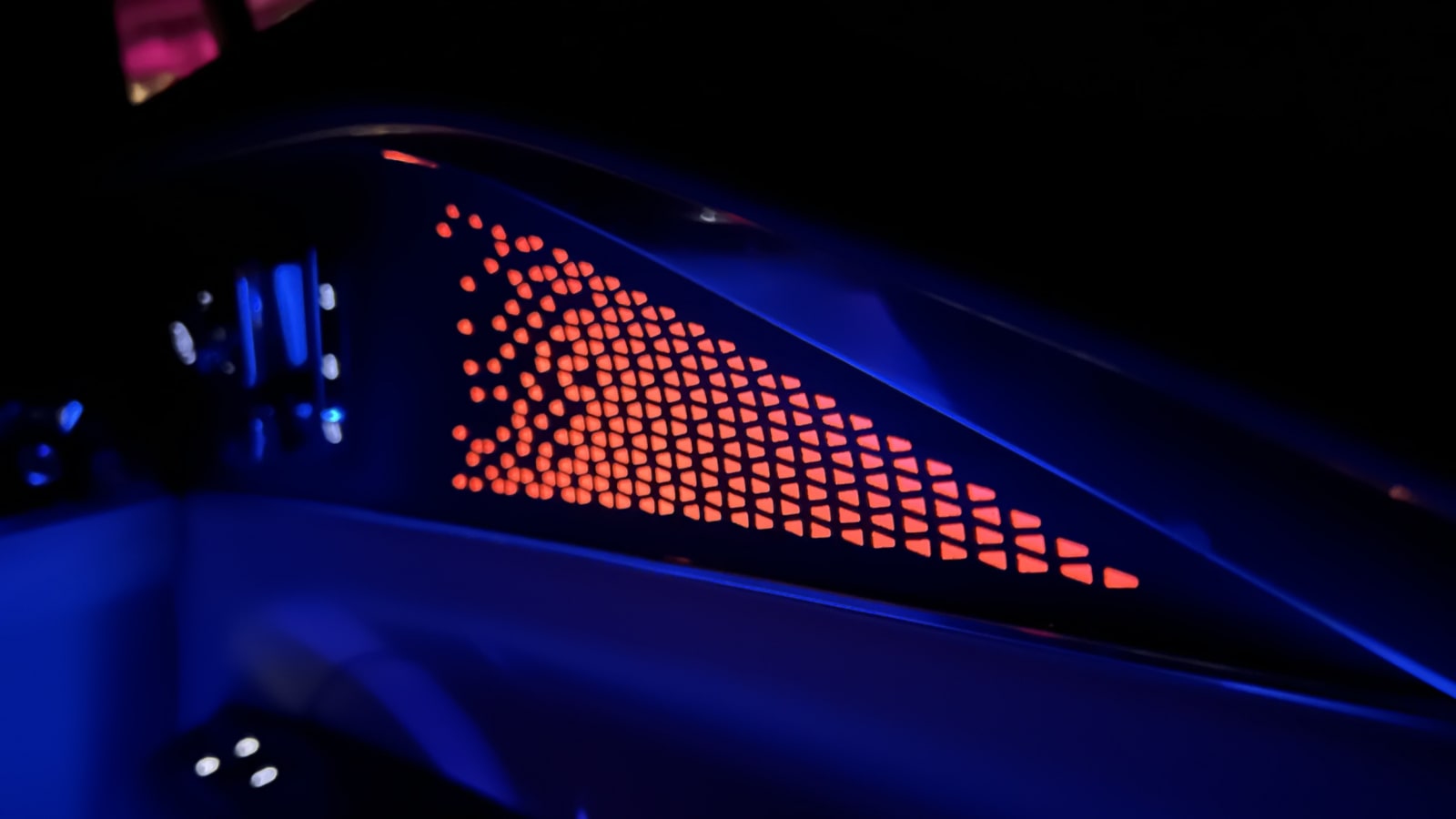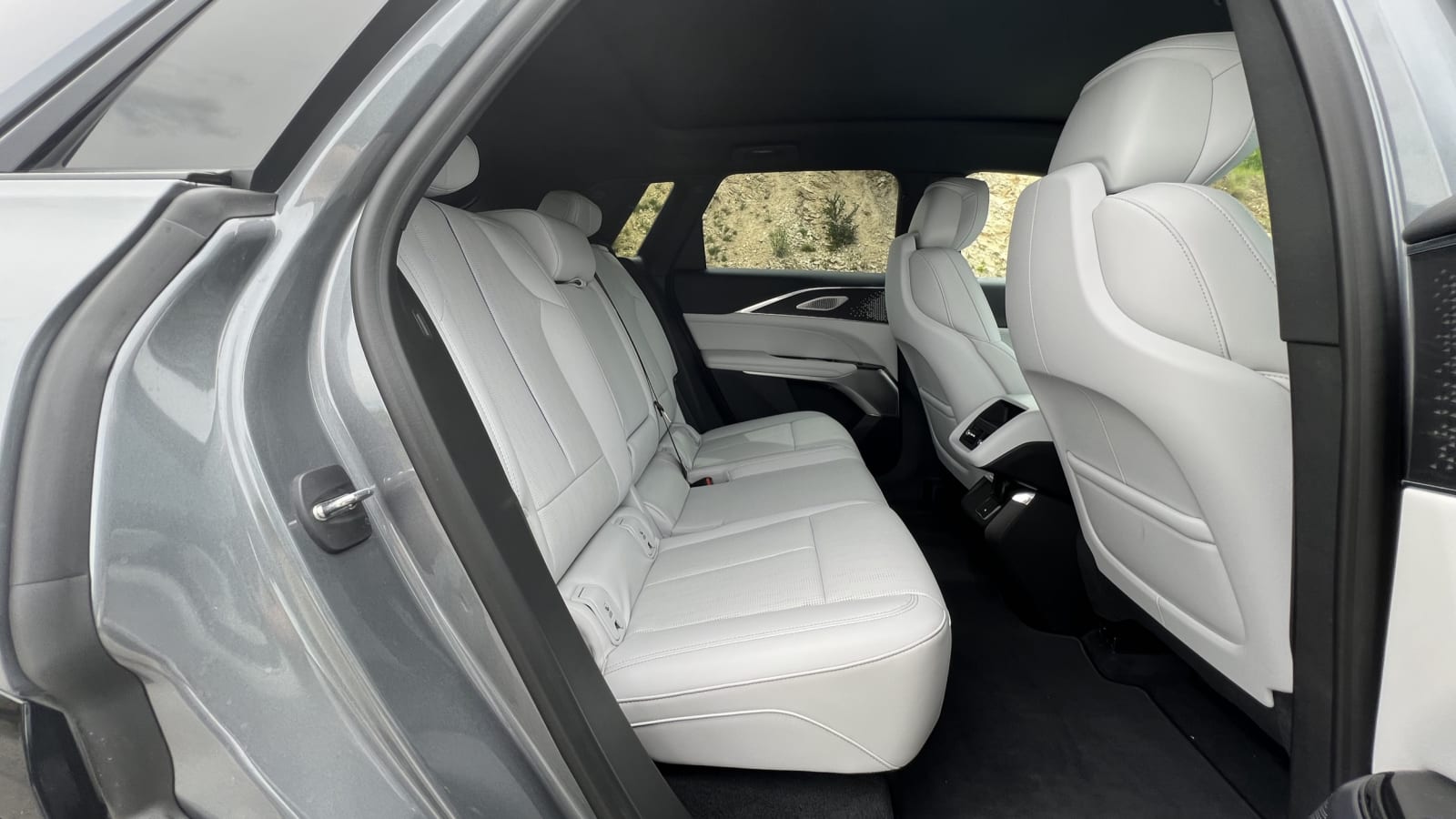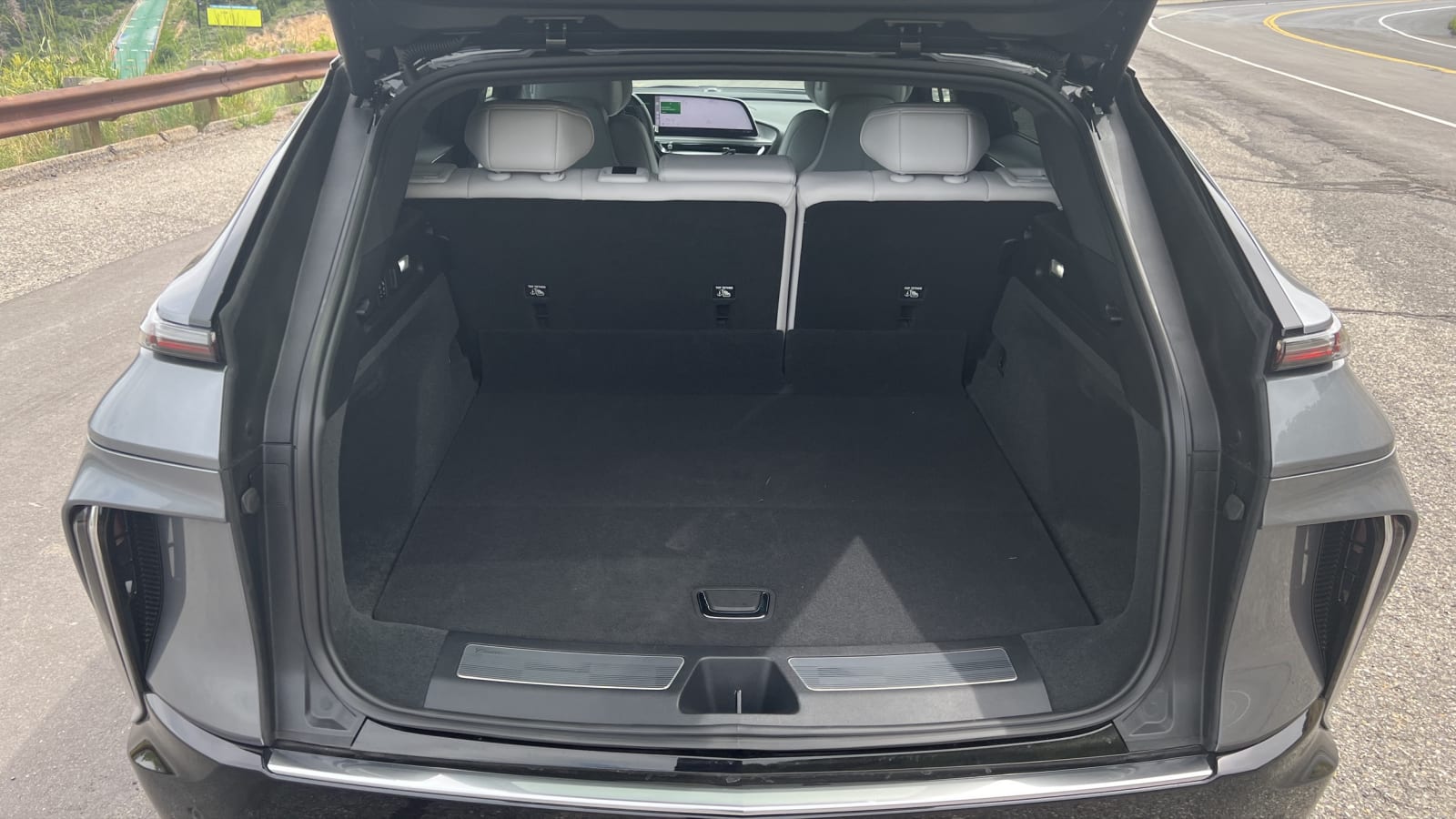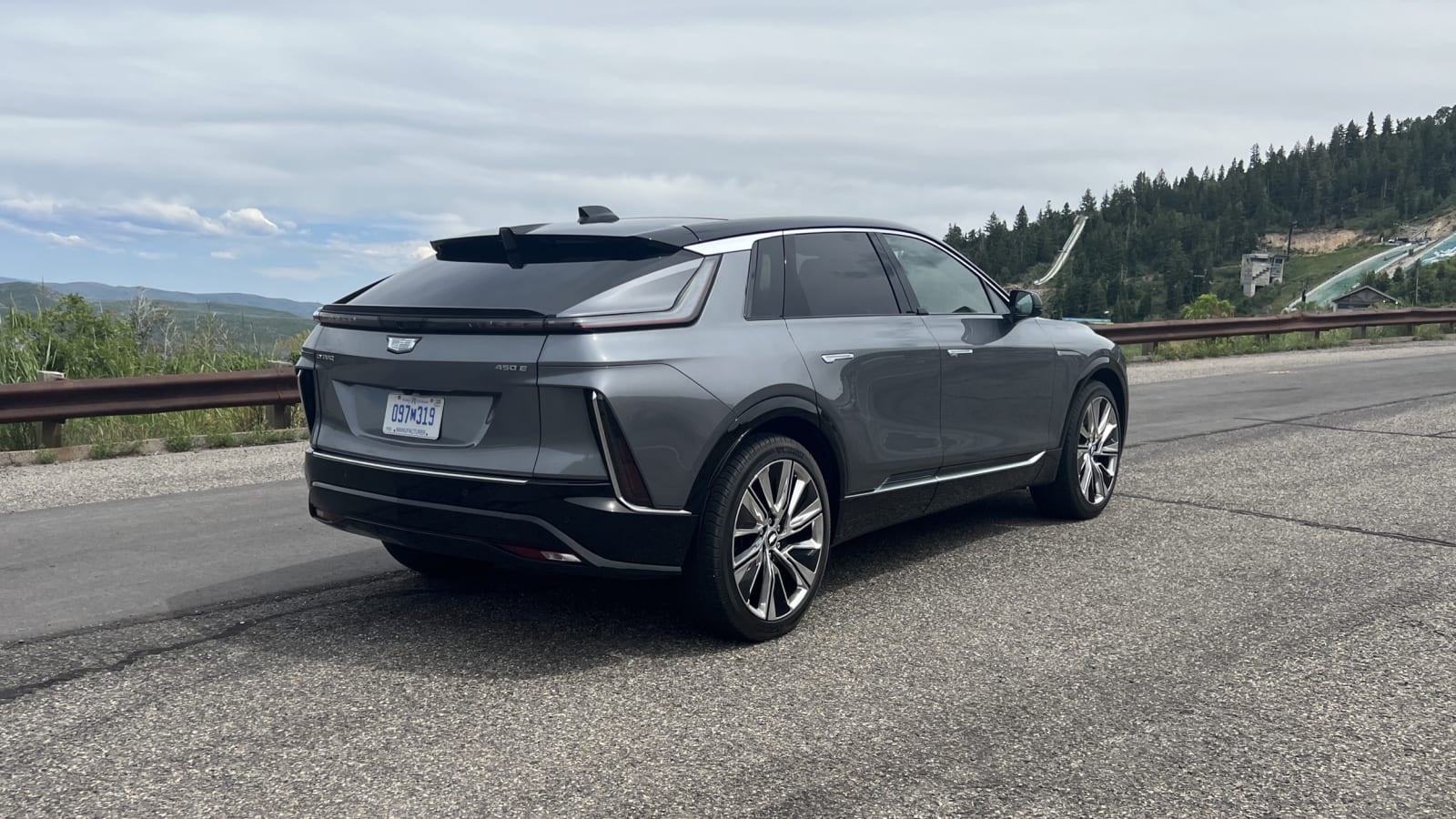2023 Cadillac Lyriq First Drive Review: The Cadillac of Cadillacs
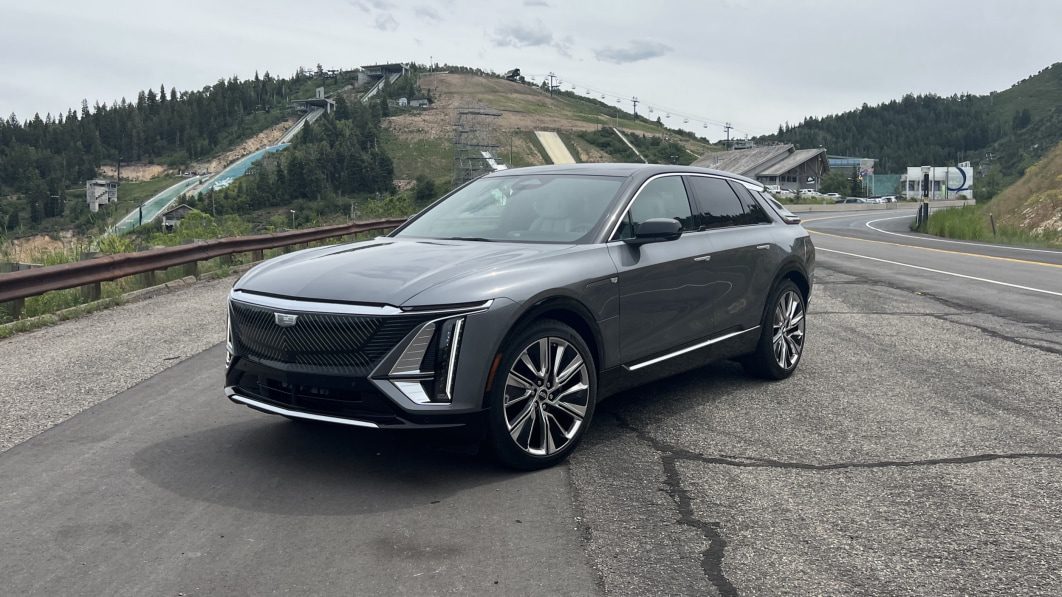
PARK CITY, Utah — This drive of the 2023 Cadillac Lyriq has been a long time coming. We got our first glimpse of the car at GM’s Warren Design Center as part of the automaker’s 2020 EV Day in March 2020, just days before the world shut down and time began moving like molasses. While a number of planned Chevy and Buick SUVs were there along with a concept for an Escalade-like EV and Cadillac’s aspirational, hand-built Celestiq, it was the Lyriq that would arrive first. Little did we know how long the wait time would feel.
Well, it’s finally here, and the production Lyriq shows an admirable faithfulness to that concept car shown in The Before Times. The 33-inch display remains, extending across the entire driver’s side and well past the midpoint of the dash. So too remain things like the light-up emblem and grille, jeweled rotary shifter and extensive wood interior trim. The sharp silhouette and eye-catching exterior lighting are also still part of the mix. It’s a rare, pleasant surprise when concept car eye candy makes it to production.
Here in Park City, the Lyriq fits right in. It’s easy to envision ski equipment being unloaded at a five-star mountain resort or ferrying important Hollywood types to and from events at the Sundance Film Festival. It seems just as likely to get a prime valet spot once back in Los Angeles, and it’s all because of the looks. Its 22-inch wheels give it a strong foundation. The nose is distinctive, with a light-up emblem on a glossy black background that’s streaked with white lines. The hood terminates in a horizontal line above the thin headlights, and jeweled vertical LEDs stand at the front corners. From the side, a high beltline rises toward the rear, while the glass roof tapers gradually into a flow-through spoiler. Flush door handles mark the way inside. The rear glass rakes sharply but doesn’t extend so far down the liftgate as to completely hamper the usefulness of the cargo area. A pipe of red lighting starts where the sides of that glass meet the roof, and follows the bottom of the glass in a horizontal line across the liftgate. There’s no rear wiper; Cadillac says the aerodynamics of the roof spoiler help to push water off the rear window. The look is cohesive and sleek, without being dramatic or weird. There’s nothing about the look — apart from the closed grille — that screams, “Hey, I’m an EV!”
Pressing the flush door handles pops the doors ajar enough to manually open them the rest of the way. What’s beyond is striking: the technology, materials, use of space and, most of all, the attention to detail. The showpiece is obviously the 33-inch curved LED display, which serves as both an infotainment screen on the right, and an instrument panel in front of the driver. Unlike the Escalade’s curved OLED curved display cluster, the Lyriq’s is one contiguous piece. Yet, as easy as it might be to focus on that bright, shiny object, the seats deserve just as much attention. They’re wrapped in white synthetic leather with blue accent piping down the centerline, and a perforation pattern in the headrests that indicate the speakers nestled within. The material is smooth and supple, and the seats themselves are lusciously comfortable.
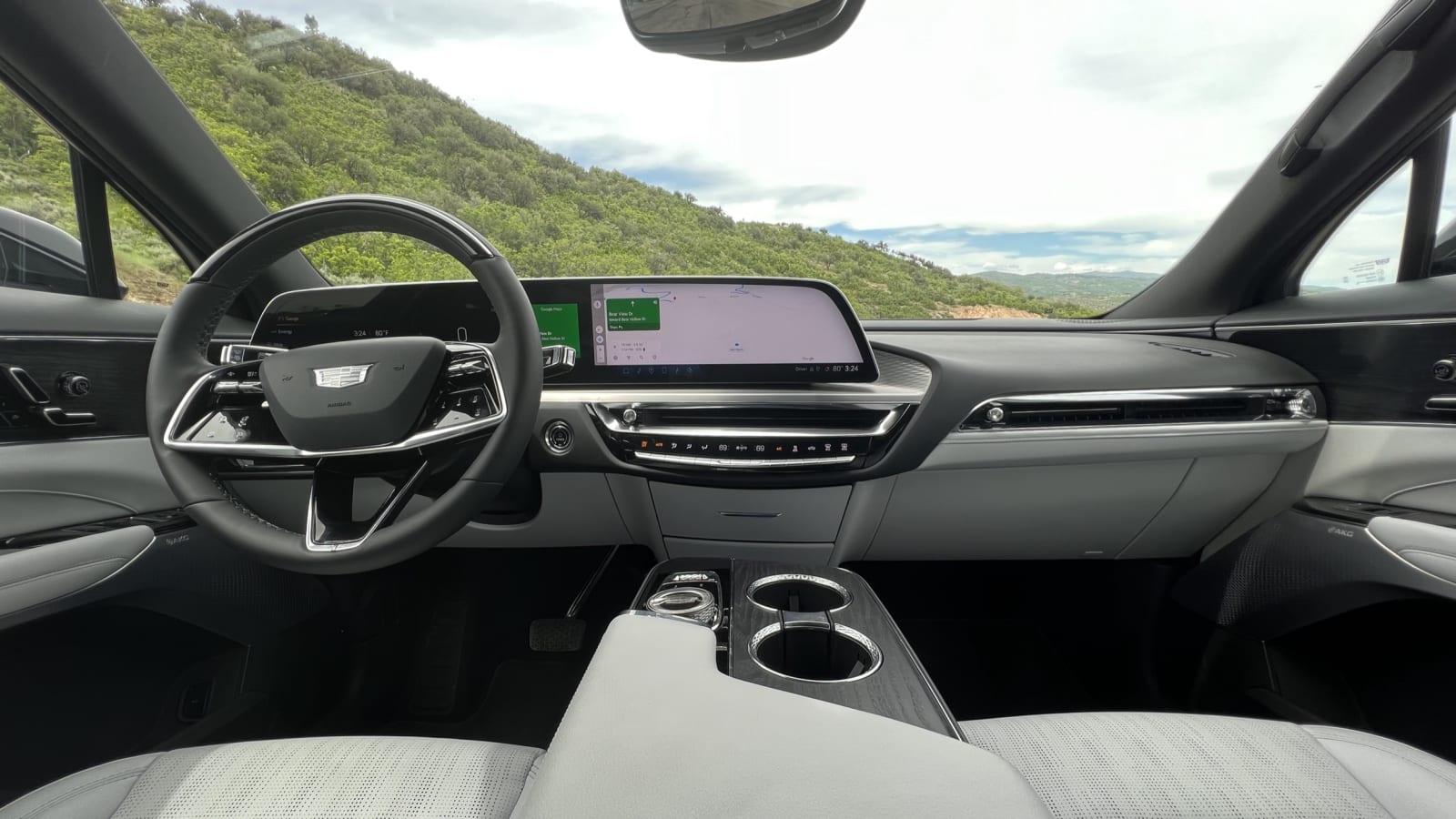
The cabin feels like a truly special space, which is something that’s been missing from so many Cadillacs of recent memory. Everything you touch feels sturdy and high quality. The cantilevered center console doesn’t quite extend to the dash, leaving room for a standalone storage compartment opposite it, lined with blue leather like the drawer of a jewelry chest. Below the floating console is an open storage bin — prefect for stashing a purse or similarly sized item — with stitched blue leather on the bottom.
To achieve such a unique, high-quality interior, Lyriq’s designers were given license to use all-new pieces throughout. You’d be hard-pressed to find many off-the-shelf GM parts here. Pretty much anything you touch, from the switchgear to the interior lights, to the vents, to the speaker covers, all sees its first light of day in the Lyriq. The designers aren’t sharing these new pieces with other GM brands, either, which should ensure that the Lyriq continues to look and feel distinctly Cadillac. Scratch that. New Cadillac. There were significant tooling costs to create all these new items, and you will see them in future Cadillacs.
As for that curved OLED display, its interface is powered by Google’s Android Automotive operating system, but with a different “skin” than you’ll find in a Hummer EV or 2022 Chevy Silverado. It’s a big unit, but is more easily navigable and not as overwhelming as something like the Mercedes EQS Hyperscreen. While still a bit dense in its content, it only took about five minutes of exploring to sort the ins and outs of the Lyriq’s menus. Still, functions as simple as drive mode selection require some familiarization with the infotainment interface as opposed to just pressing a button.
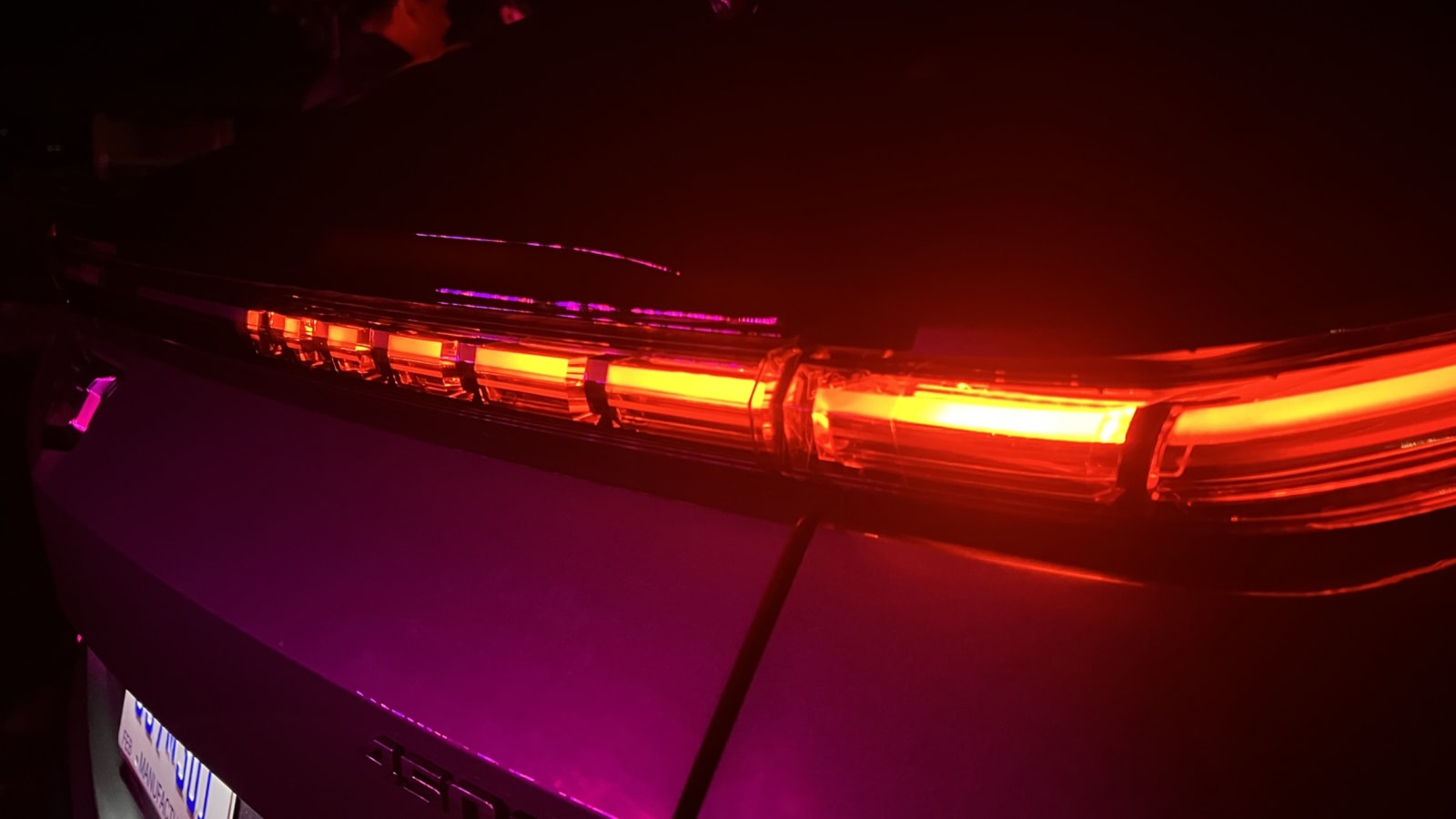
Lighting, both inside and out, is a big part of the Lyriq’s personality. Up front, the car’s solid, glossy black grille is adorned with a light-up crest and a number of patterned white streaks, some of which illuminate to greet you with what almost looks like a smile as you approach and unlock the vehicle. Inside, laser-cut wood trim pieces backed with metal thin enough to let light shine through provide a unique ambiance. The interior storage bins even have proximity lighting to help you place or pluck items. You can also dial in the exact ambience by adjusting the lighting color from within the infotainment system.
The Lyriq is the first Cadillac to employ GM’s Ultium electric powertrain technology, comprised of a modular battery pack and, in this case, the choice of one or two electric motors. The single-motor version gets rear-wheel drive, with the e-motor providing 340 horsepower and 325 pound-feet of torque. The EPA-rated driving range is 312 miles. Stepping up to the all-wheel-drive version adds another motor at the front, for a total estimated system output of 500 horsepower. It uses the same 102-kilowatt-hour battery as the RWD version, so while driving range has not yet been assessed, for that extra potency.
Unless you live in the snow belt, the ample power of the RWD model and the extra range it affords would make it the smart choice, but the 500-horsepower and narrow price delta of the AWD — just $2,000 for the 2023 model – is hard to pass up. The gap in pricing increases for 2024, though, to around $4,000.
For charging that battery, the Lyriq is capable of up to 190 kilowatts at a DC fast charger, which can feed the car up to 76 miles of range in about 10 minutes. For charging at home, you can do so without a standalone charging station. The Lyriq’s 7.7-kW dual-level mobile charging cable can use a standard 120-volt outlet for trickle charging, or a 240-volt outlet for up to 17 miles of range per hour in the RWD version, or 19 miles per hour with AWD. If you do have a Level 2 wall box, the Lyriq can add up to 52 miles in an hour with its 19.2-kW onboard charger. Later AWD models will have an 11.5-kW onboard charger, replenishing up to 37 miles in an hour.
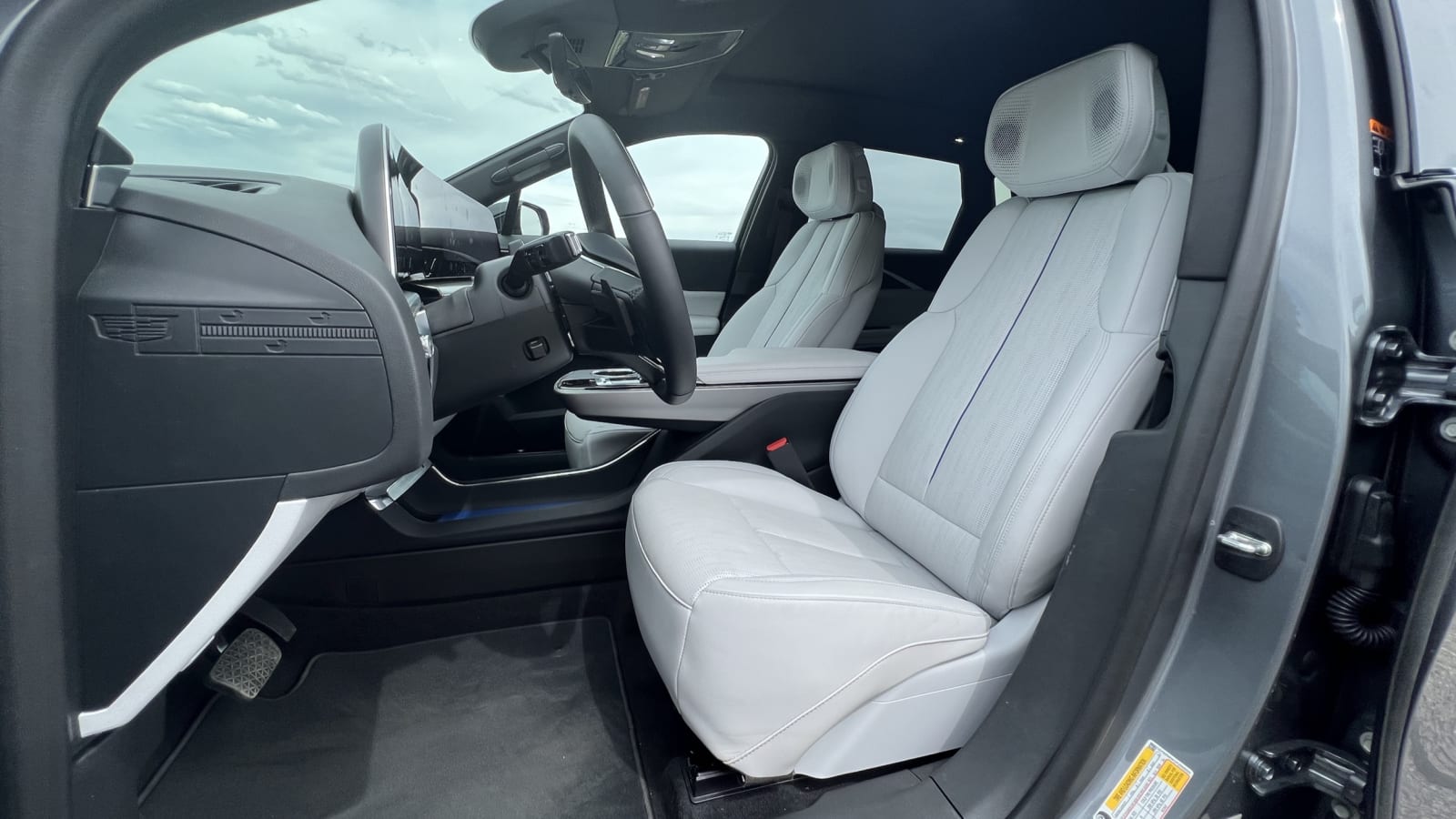
Our drive took place in the RWD model, with its single 340-horsepower rear motor motivating the Lyriq’s hefty 5,688-pound curb weight. The instant torque gets it moving, and its smooth acceleration feels neither urgent nor leisurely. It has no trouble matching or exceeding the speed of other traffic, but it won’t send your guts floating when you put the accelerator to the floor.
You can leave the braking in its standard setting, which keeps the Lyriq nearly coasting when you lift off the throttle. There are two selectable levels of one-pedal driving, with the high setting providing an aggressive 0.3 g of deceleration. There’s also a new version of the “regen-on-demand” paddle on the back of the left side of the steering wheel (like the one that debuted way-back-when in the Cadillac ELR plug-in hybrid and continues to serve in the Chevy Bolt). Available on top of whatever regenerative braking setting you choose, this new iteration is pressure-sensitive with a progressive response to input — pulling it to slow you down feels a bit like using the trailer brake controls in a pickup truck. It’s useful when controlling downhill speed, but can be difficult if you’re simultaneously steering through corners. A full pull on the paddle in normal braking mode is enough to bring the Lyriq to a complete stop, even when on a reasonable decline. Paired with the “high” one-pedal braking setting, it can slow you down at a jarring .35g.
In addition to the regen settings, the Lyriq offers different drive modes to tailor your drive experience — Tour, Sport and Snow/Ice. There’s also a configurable “My Mode,” which allows you to mix and match settings for steering, braking and acceleration, as well as choosing the level of synthesized powertrain sound piped into the cabin. In some vehicles, the difference between modes can be drastic, while it’s negligible in other cars. The Lyriq lands somewhere in the middle: not dramatic, but noticeable enough, especially with regard to acceleration and steering feel, to be worth toying with.
The Lyriq features a five-link independent suspension front and rear, along with “Passive-Plus” frequency-dependent dampers that behave differently over smaller road imperfections than larger bumps. It’s hard to quantify from the driver’s seat how much any part of the suspension is responsible for what, but it’s undeniable that the Lyriq provides a calm, smooth ride, even on its 22-inch wheels without feeling squishy or completely isolated.
The Lyriq holds up well when the road starts to bend. The steering is precise, making it easy to place the car where desired through tight corners on narrow mountain roads. With a near 50:50 weight distribution and a low center of gravity (thanks, battery), it feels neutral and steady through transitions.
As you’d expect from an EV, the Lyriq is quiet, but it successfully goes above and beyond to create what Cadillac calls a “quiet oasis.” Besides the obvious lack of engine and exhaust, you really don’t hear much at all from the interaction between the chassis and the pavement, either. Part of this is sound deadening, but the Lyriq has another ingenious noise cancellation trick: Accelerometers located at each wheel measure the vibrations from the road, and send that info to the sound system, predicting the exact frequency to send through the speakers to counter the sounds coming into the cabin. The wind noise at high speeds is the only real sound maker here, but it’s minimal as well.
If you want a Cadillac Lyriq, you’re going to have to wait. The order books are closed for 2023. For customers who did get in an order for the 2023 model, deliveries begin next month. For those who were quick to the draw, the rear-wheel-drive Lyriq started at $62,990, including destination charge. The all-wheel-drive Lyriq started at $64,990, which is a surprisingly small premium given the hefty performance increase. Those buyers could choose either two years of public DC fast charging or a $1,500 credit toward a Level 2/240V outlet installation (make sure to get a quote from a local electrician before making that choice).
Preorders have opened for the 2024 model, which is slated to ship in spring 2023. Cadillac says that the RWD model will start at “about $60,000,” with AWD beginning at “about $64,000.” While that’s not quite the bargain the earliest of adopters will enjoy, it still feels like a bargain for such a refined, capable and feature-rich luxury EV.
